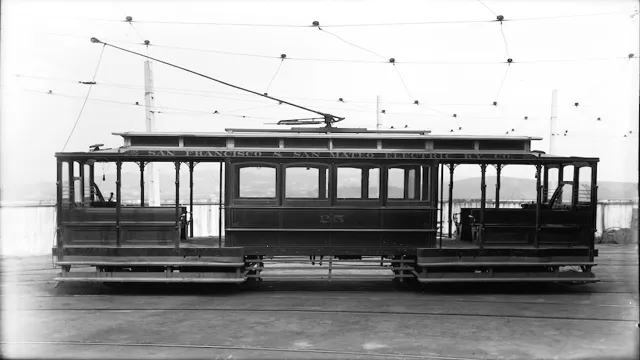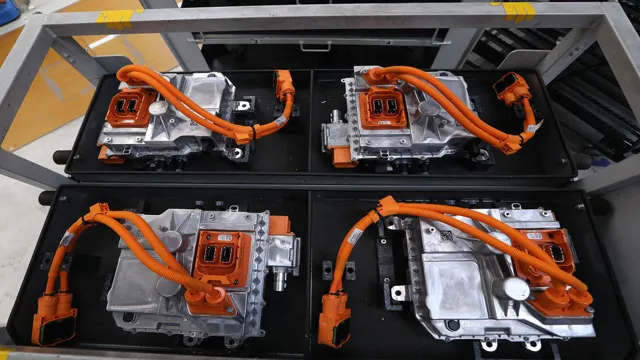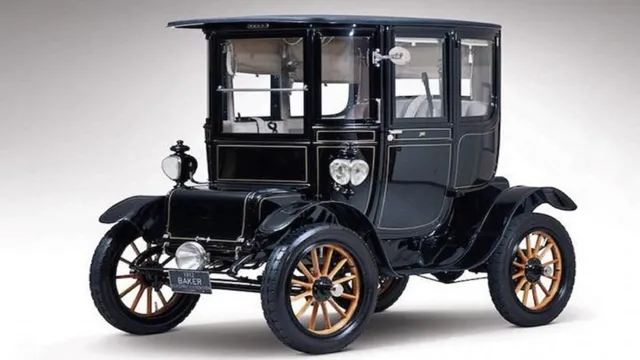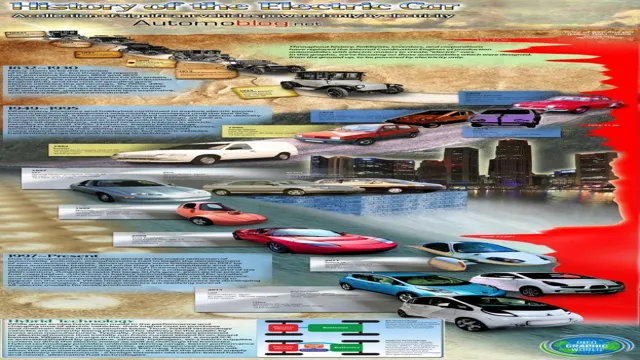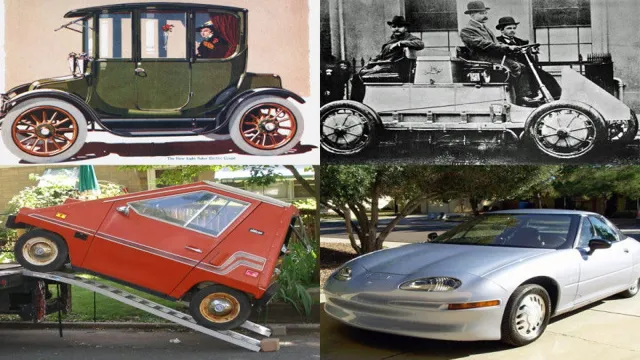Reviving the Past: Tracing the Fascinating History of Electric Street Cars
Electric street cars have been an important part of transportation history. The origin of the electric street car dates back to the late 1800s, when cities were growing, and citizens were looking for an efficient mode of transportation. The advent of electric streetcars revolutionized the way people travel, making it easier to navigate through urban areas.
Electric streetcars became a popular mode of transportation in many cities around the world, and their use continued until the mid-20th century when automobiles became the preferred mode of transportation. These electric streetcars were powered through overhead wires, which made them environmentally friendly and quiet. They were also reliable and efficient, making them an ideal choice for commuters.
The first electric streetcar line was installed in Montgomery, Alabama in 1886 and started operating in February 188 The success of electric streetcars in Montgomery encouraged other cities to adopt the technology. The electric streetcar reached its peak in the early 20th century, when these vehicles were an essential part of public transportation networks worldwide.
They were fast, relatively cheap, and efficient, which made them popular among the working class. However, with the advent of automobiles and the development of more sophisticated road systems, electric streetcars slowly lost their place as a popular mode of transportation. By the mid-20th century, most cities had switched to buses or automobiles, and the era of the electric streetcar had come to an end.
Despite this, electric streetcars remain a fascinating part of transportation history, and their legacy continues to this day. Many cities have preserved their electric streetcars, using them as tourist attractions or in special events. As we look to the future, we can learn from the past, including the history of electric streetcars, and use that knowledge to create a better future for transportation.
Introduction
Electric street cars history is a fascinating chapter in the evolution of urban transportation. In the late 19th and early 20th centuries, electric trolleys were the most popular mode of public transport, providing efficient and low-cost mobility to millions of people in North America and Europe. They were powered by overhead wires and ran on rails, following fixed routes through cities and suburbs.
The advent of electric street cars revolutionized urban mobility, making it possible for residents to travel longer distances quickly and comfortably, while reducing pollution and congestion. Electric street cars were also a symbol of progress and modernity, and their popularity peaked in the 1920s. However, the rise of automobiles and buses led to the demise of electric trolleys in most cities by the mid-20th century.
Nowadays, electric street cars are making a comeback in some cities, as they offer a sustainable and efficient alternative to cars and buses in densely populated areas.
What are Electric Street Cars?
Electric street cars, also known as streetcars or trams, are a form of public transportation that runs on rails embedded in city streets. These vehicles are powered by electricity, typically drawn from overhead wires, and can be single or double-decker. Streetcars are commonly found in large metropolitan areas, providing a convenient, eco-friendly, and affordable way to move around the city.
They have been in use since the late 19th century and continue to be popular today in many cities worldwide. So, have you ever ridden on an electric streetcar? If not, it’s definitely an experience worth trying!
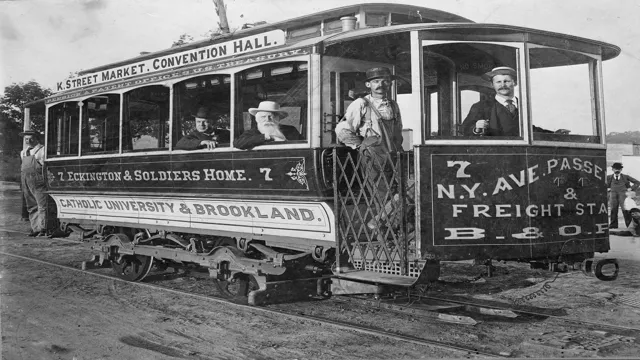
Brief History of Electric Street Cars
Introduction Electric street cars have been around for over a century, providing a quick and efficient mode of transportation in cities across the world. These vehicles are powered by electricity, which comes from overhead wires that run along the streets. The idea of electric street cars can be traced back to the 1830s, when Robert Davidson created a small electric-powered locomotive that could pull a few passengers.
However, it wasn’t until the late 1800s that the first electric streetcar was introduced in Berlin, Germany. From there, the use of electric street cars spread rapidly, and by the early 1900s, they were a common sight in many cities throughout the US and Europe. Electric street cars revolutionized transportation, making it easier for people to travel longer distances faster and more efficiently.
Today, while many cities have moved away from streetcars in favor of buses or light rail systems, electric street cars continue to be an important part of modern urban transportation systems.
Advantages of Electric Street Cars
Electric street cars have a long and fascinating history that dates back to the late 19th century. These vehicles revolutionized public transportation, providing a cleaner, more efficient mode of travel for urban residents. One of the main advantages of electric street cars is their reliability and speed.
Because electric motors provide instant torque, street cars can accelerate quickly and smoothly, enabling them to keep pace with traffic and reduce congestion. Additionally, electric street cars are environmentally friendly because they produce no emissions, making them an attractive option for cities looking to reduce their carbon footprints. Notably, electric street cars also have an important role to play in promoting public health.
By providing convenient and affordable transportation options, they can help reduce sedentary behavior and encourage residents to get out and explore their city. Overall, the history and benefits of electric street cars make them a significant part of our transportation landscape, both today and in the future.
Eco-Friendly and Sustainable
Electric street cars are gaining in popularity due to their eco-friendliness and sustainability. By running on electricity, they produce zero emissions, making them an environmentally friendly option for public transportation. Additionally, they are much quieter than traditional buses, reducing noise pollution in urban areas.
Another advantage is that they are highly energy-efficient, with regenerative braking systems that capture energy that is normally lost during braking. This energy can be reused to power the cars or be sent back into the grid. Overall, electric street cars are a sustainable and efficient mode of transportation that is better for the environment, reduces noise pollution, and is energy-efficient.
Using electric street cars can help cities become more sustainable and reduce their carbon footprint.
Efficient and Fast
Electric street cars are becoming more and more popular as a sustainable mode of transportation in cities worldwide. One major advantage of electric street cars is their efficiency and speed. Unlike cars stuck in traffic or buses navigating narrow streets, electric street cars can travel at a consistent speed without much interruption.
Additionally, their electric motors provide instant torque, allowing for quick acceleration and deceleration without the need for extra fuel or power. This makes them an ideal choice for cities looking to reduce their carbon footprint while still providing efficient and fast transportation options for their residents. In fact, some cities have even integrated electric street car systems into their public transportation networks, making it easier and more convenient for people to hop on and off as they please.
With their environmentally friendly advantages and efficient travel times, electric street cars are a promising solution for the future of urban transportation.
Low Maintenance Costs
Electric street cars have numerous advantages over traditional fuel-powered vehicles, and one significant benefit is their low maintenance costs. Unlike gasoline-powered cars that require frequent oil, filter changes, and other tune-ups, electric street cars have fewer moving parts. This means fewer parts to replace or maintain, and consequently, significantly lower maintenance costs.
Additionally, electric cars come with regenerative braking that reduces wear and tear on the braking system, meaning less frequent repairs. Moreover, electric cars don’t need frequent engine tune-ups, oil changes, or expensive spark plug replacements, making them an excellent option for municipalities and transportation companies looking to save money on maintenance. All in all, with lower maintenance costs, electric street cars offer a financially compelling solution to cities and urban areas that need reliable, economical, and sustainable transportation options.
Disadvantages of Electric Street Cars
Electric street cars have a rich history and were once a staple of cities worldwide, but their widespread use has declined in recent years. While electric street cars have many advantages, such as being environmentally friendly and providing a convenient mode of transportation, they also have some disadvantages. One of the main drawbacks of electric street cars is their limited route flexibility, which is determined by the location of the tracks and overhead wires.
This can make it challenging to adapt to changing demand or route changes. Furthermore, electric street cars often suffer from slower speeds and poor performance in adverse weather conditions, which can have a significant impact on their reliability and efficiency. Despite these disadvantages, electric street cars remain an important part of the transportation landscape and continue to play a vital role in the urban mobility of many cities.
High Initial Costs
When it comes to electric streetcars, one of the main disadvantages is the high initial cost. Electric streetcars require specialized infrastructure, such as overhead wires or underground electrical systems, which can be expensive to install. Additionally, the cost of acquiring the electric vehicles themselves can be higher than their traditional counterparts.
While electric streetcars tend to have lower operating costs over time, the upfront investment can be a barrier for many cities and transit agencies. However, it’s worth noting that the initial investment in electric streetcars can have long-term benefits, including reduced emissions and improved public transportation options. As technology continues to evolve and become more cost-effective, we may see electric streetcars become a more viable option for cities around the world.
Requires Infrastructure Development
Electric street cars may have many advantages over other modes of transport, such as being environmentally friendly and efficient, but there are also some significant disadvantages to consider. One major drawback is the need for infrastructure development. Retrofitting existing roads with electrical wiring and overhead cables can be a daunting and expensive task.
In addition, electric street cars require specialized maintenance and upkeep, another significant cost factor. Furthermore, any disruptions or damages to the infrastructure can cause significant service disruptions for daily commuters. It’s important to note that the infrastructure investment required for electric street cars may not always be feasible for cities with limited budgets or limited space.
Therefore, it’s necessary to consider and balance all the associated costs and benefits before deciding on the implementation of electric street cars.
Conclusion
In conclusion, the history of electric street cars is a testament to our ability to innovate and adapt to the changing needs of our society. From their humble beginnings as a means of transporting goods and people, electric street cars have evolved into sustainable and efficient modes of transportation. By embracing new technologies and harnessing the power of clean energy, we can continue to build on this legacy and create a more sustainable future for generations to come.
Whether you’re a fan of history, science, or just appreciate a good pun, there’s no denying the electrifying history of electric street cars. So let’s continue to spark change and keep this innovation rolling forward!”
FAQs
What is the history of electric street cars?
Electric street cars, also known as trams or trolleys, were first introduced in the late 19th century. They were a popular mode of transportation in many cities until the mid-20th century, when they were largely replaced by buses and cars.
When was the first electric street car introduced?
The first electric street car was introduced in Germany in 1881. It was developed by Werner Siemens and ran on a route in Berlin.
What advantages did electric street cars have over other types of transportation?
Electric street cars were faster and more reliable than horse-drawn carriages, which were the most common form of public transportation prior to their introduction. They were also cleaner and more efficient than steam-powered trains.
Why did electric street cars decline in popularity?
Electric street cars declined in popularity in the mid-20th century for several reasons. One was the rise of the automobile, which made personal transportation more convenient. Another factor was the growth of buses, which were cheaper to operate than street cars. Finally, some cities dismantled their street car systems as part of urban renewal projects.

